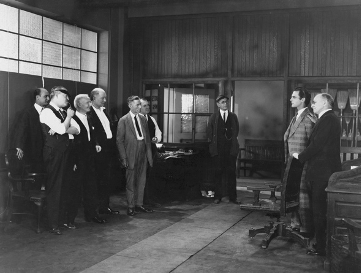The Paradox of CEO Succession Planning
In a recurring lament often heard echoing through the halls of corporate America, CEOs and Boards of Directors frequently bemoan their organizations’ lack of internal leadership talent, especially when it creates a mismatch with the existing culture. Yet when the market jitters and financial forecasts look grim, these leaders often cut budgets for leadership development. This move perpetuates a cycle of leadership scarcity, ensuring the dilemma permeates into the next fiscal year and beyond.
The Proven Advantage of Internal Promotions
Research suggests that CEOs promoted internally tend to outperform their externally hired counterparts in the long run in terms of tenure and organizational profitability. The longitudinal data from Spencer Stuart reveals that internally promoted CEOs often outperform experienced CEOs hired externally by the sixth year. Internal hires bring a deep understanding of the company’s culture, values, and operational nuances that an external candidate cannot match from day one. It also sends a message to all employees that the Board of Directors believes in the company and its employees.
Notable examples of companies that have thrived with this strategy include Procter & Gamble, General Electric, and McDonald’s, all of which have a strong tradition of promoting from within. These companies have demonstrated that cultivating internal talent ensures smooth leadership transitions and fosters a consistent corporate culture that can adapt and innovate over time.
External Hires: A Recipe for Disappointment
 Externally hired CEOs frequently need help to mesh with the prevailing corporate culture. These leaders often arrive with a deterministic mindset, believing that what worked before will work again. “This is how we did it at my last company, and this is the reason you hired me” becomes their refrain—a harbinger of resistance and eventual failure.
Externally hired CEOs frequently need help to mesh with the prevailing corporate culture. These leaders often arrive with a deterministic mindset, believing that what worked before will work again. “This is how we did it at my last company, and this is the reason you hired me” becomes their refrain—a harbinger of resistance and eventual failure.
Home Depot’s Robert Nardelli clashed with the company’s entrepreneurial spirit. Carly Fiorina’s tactics at Hewlett-Packard, which she brought over from AT&T, do not mesh with HP’s consensus-driven ethos. Even Marissa Mayer at Yahoo and John Sculley at Apple were ensnared by cultural mismatches, ultimately leading to their undoing.
The Hidden Costs of Budget Cuts in Leadership Development
Despite the evidence supporting internal promotions, many companies remain ill-prepared due to shortsighted budget cuts in leadership development during tough financial times. It’s a false economy. When development programs are slashed, the immediate savings are often negated by increased attrition rates and lowered employee morale. It becomes a reactionary strategy.
 A comprehensive survey conducted in May 2024 by the US Department of Labour revealed that 93% of employees who voluntarily left their organizations cited the lack of learning and development opportunities as their primary reason for departure. Concurrently, a global survey indicated that over 40% of CEOs lose sleep over their perceived lack of a strong leadership bench. The savings from slashed development budgets are often offset by the substantial costs associated with hiring, training, and integrating new employees.
A comprehensive survey conducted in May 2024 by the US Department of Labour revealed that 93% of employees who voluntarily left their organizations cited the lack of learning and development opportunities as their primary reason for departure. Concurrently, a global survey indicated that over 40% of CEOs lose sleep over their perceived lack of a strong leadership bench. The savings from slashed development budgets are often offset by the substantial costs associated with hiring, training, and integrating new employees.
The Long-Term Perspective: Building from Within
Investing in leadership development is not merely a line item on a budget—it is a strategic imperative. When organizations prioritize developing their internal talent, they capitalize on benefits that go beyond immediate financials. For one, employees perceive real opportunities for career advancement within the company. This boosts morale, leading to higher engagement scores and lower attrition rates.
Promoting from within also ensures that new leaders are well-versed in the company’s intricacies and existing value systems. Seeing their leaders rise from within, employees will likely feel a heightened sense of loyalty and purpose, affirming their belief in the company’s long-term vision.
Building the Future Today
The data is unequivocal: companies that promote CEOs from within are more likely to enjoy prolonged periods of stability and growth. Conscientious investment in leadership development is non-negotiable to cultivate a fertile ground of internal talent.
Boards and current CEOs must resist the urge to cut these critical areas in the name of short-term gains. Instead, they should consider these investments indispensable to the company’s long-term health. An internally promoted CEO, imbued with the organization’s culture and values, understands the unique dynamics of their company and can navigate its challenges with a level of insight that an external hire, however talented, simply cannot match.
Final Thought
Research has shown that the tenure of CEOs promoted from within is ultimately more successful. Despite this, leadership development budgets are often cut to achieve bottom-line profits, ensuring bonuses for the current CEO but at the expense of future stability.
Not all externally hired CEOs with previous CEO experience will fail, and not all internally promoted CEOs will succeed. However, the statistics evidence a compelling advantage for first-time internal CEOs. According to studies by Business+Strategy Magazine and Spencer Stuart, internally promoted CEOs tend to have better performance and longevity success rates than their externally hired counterparts.
 By committing to developing internal talent and promoting from within, companies can and will foster a resilient and innovative culture, ensuring the continuity of leadership and the long-term success and stability that builds shareholder value. The intangible impact on all employees across the organization can also not be underestimated.
By committing to developing internal talent and promoting from within, companies can and will foster a resilient and innovative culture, ensuring the continuity of leadership and the long-term success and stability that builds shareholder value. The intangible impact on all employees across the organization can also not be underestimated.
The sustainable path to corporate success lies in recognizing and acting upon the fundamental importance of internal leadership development. As companies invest in their people and promote from within, they create a nurturing environment where talent flourishes, morale soars, and organizational loyalty thrives.
This journey requires a steadfast commitment to long-term vision over short-term gains, a dedication to cultivating the next generation of leaders, and an unwavering belief in the value of the people who make up the organization’s very fabric. With these guiding principles, companies can break free from the cycle of uncertainty, stepping confidently into a future where internally nurtured CEOs lead the way to sustained prosperity.
Today’s corporate leadership wisdom is simple yet profound: Cherish your internal talent, cultivate it with care, and watch as it blossoms into the future leadership your company needs. The alternative—a revolving door of external hires, cut development programs, and persistent leadership gaps—leads only to stagnation and decline. The choice is clear, and the path is well-lit. The time to act is now.
Your turn
 Now is your turn to contribute your perspective on the discussion on LINKEDIN
Now is your turn to contribute your perspective on the discussion on LINKEDIN
David Cohen is completing his second book on how to hire for fit to values/culture. His first book is called The Talent Edge. He has conducted workshops globally on Structured Behavioural Interviewing. For more information on the workshop, please contact DAVID.
 DS Cohen & Associates
DS Cohen & Associates
